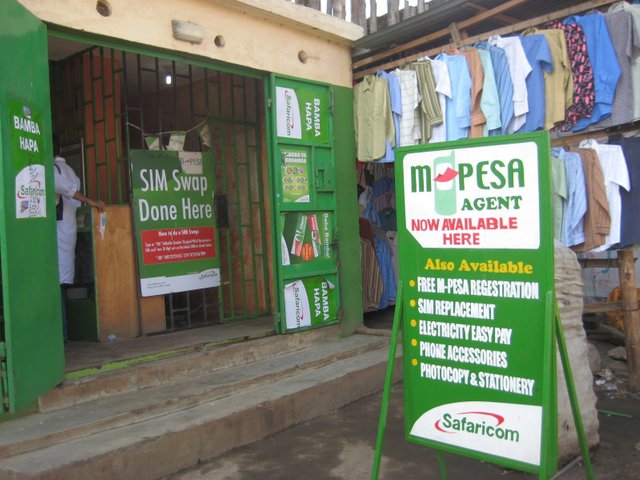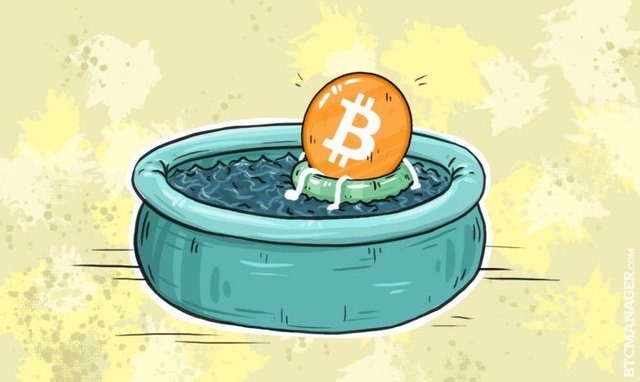The Success of M-Pesa Within Kenya Can Teach Us A Lot About How a Digital Payment System Achieves Long Term Success.
There is no better example of the true potential and advantages of digital payments than that of M-Pesa in Kenya.
M-Pesa is a digital payment system which enables its users to send money through their mobile phones. Since its original launch in Kenya 3 and a half years ago, it has had tremendous success. Over 70% of the households in Kenya use M-Pesa, but over 50% of its users would be considered "extremely poor" and have had no prior access to any type of banking system. Although M-Pesa is run by a centralized provider and is not a cryptocurrency, it still proves just how beneficial mobile payments can be in the developing world. The biggest reason that M-Pesa has been so successful is due to the fact that the service is extremely liquid when compared to cryptocurrencies, and is still able to drastically lower the barrier to entry for even the poorest individuals.

How does M-Pesa work?
To open an M-Pesa account an individual simply must go to one of the 5,000 locations that provide M-Pesa transfers, withdrawals, or registrations. The individual must present an original identification document in order to open an account, and any time they wish to cash in or cash out. These "cash merchant" locations are highly supervised and regulated to ensure that they are abiding by all procedures. The users are virtually able to load money onto their mobile M-Pesa account, and then send the money to others through text messages which utilize a pin code. M-Pesa is accepted for many services and items throughout the country including taxi services, restaurants, and markets. There is a small fee associated with sending money and withdrawing money from your account, but the fees are minimal and don't deter any individuals from using the service. All money going in and out of M-Pesa is stored in a account and is backed by pools of other accounts. Each M-Pesa transaction is monitored and their are daily sending and receiving limits in an attempt to deter any criminal activity or bad behavior.
A large factor of M-Pesa's success was that the platform was able to use existing infrastructure for their agent locations.
The shops and stores that act as M-Pesa agents were originally airtime and mobile phone shops, but has since expanded to include many general retail shops that offer M-Pesa services. One of the biggest reasons many digital currencies and mobile payment methods have failed to be adopted in other parts of the world is the lack of liquidity, but by employing over 5,000 different agent location throughout the country M-Pesa is probably the most liquid digital payment system in the world. M-Pesa never had to invest a large sum of capital into building their agent location network, rather they allowed existing stores and companies to act as their agents in their existing stores. The concept and ideas behind M-Pesa are truly brilliant, and that is evident because of the fact it has been adopted by nearly 70% of the country.
How important is liquidity to a digital payment system?
Imagine if there were 5,000 different locations in the US where individuals were able to buy or sell bitcoin for minimal fees. There is a very good chance that in that scenario Bitcoin would be much more appealing to the average person. Since the very inception of digital currencies one of the major hurdles they have faced has been the lack of liquidity within the market. The advantages that cryptocurrencies offer will likely never be enough for mainstream adoption, until there is an increase in ability and easy of Cryptocurrency to fiat and vice versa. Some time after the adoption of digital currencies, cashing out to fiat currency will likely not be as necessary because more places and people accept digital currency. For the true adoption of a new payment system, the system will need to be very liquid and convenient for the average person to use. The lack of liquidity within the US has been caused in a large part by various regulation and government oversight, but it still has a lot of challenges ahead before the chance of adoption.

In order for any digital payment method to become adopted, it must have advantages over their current system and give its users incentives to use it.
One of the most important incentives is the ease at which the system can be used for what the individual needs. The other advantages such as speed of transfers, validation of funds, and the deflation of most cryptocurrencies all must come secondary to the ease of use and liquidity within the market. Even if a system offers complete and clear advantages over the current system; if it's difficult for the individual to use the payment system for what they need, then it is unlikely that the individual would use the new payment method no matter how great the advantages were. In North America and many parts of Europe the intense regulations have made it difficult and risky for any firms that wish to handle converting cryptocurrencies into fiat currency. Over the past 3 months we saw a clear example of this in December when Circle, who was one of the frequently used methods for buying small amounts of bitcoin within the US, decided to discontinue their customer's ability to buy or sell bitcoins through the service.
What can digital currency firms learn from M-Pesa?
When we look at the success of M-Pesa, it can be largely attributed to its minimal barrier to entry, liquidity, and ease of use. Many digital currencies do significantly lower the barrier to entry and are easy to use, but the lack of liquidity has made the adoption very difficult. How could Bitcoin and other cryptocurrencies improve their liquidity? Many individuals believe the easiest and cheapest way to increase Bitcoin liquidity would be to implement "cash agents" or locations where bitcoin could be bought or sold for fiat currency at a low fee. These cash locations would likely need to be within existing infrastructures, such as gan stations, convenience stores, ect, and offer these establishments percentages of the fees like Western Union does. This approach of using existing establishments drastically reduces costs and gives the opportunity for cash agents in abundant locations. The regulation in the US currently would likely make this type of system very hard to implement, but that doesn't mean that the regulation will stay that way forever.

I really hope you enjoyed this post and please feel free to give any input below. Please consider following me if you enjoyed this content and would like to see more. Thanks for reading!
sources: http://www.cgap.org/blog/10-things-you-thought-you-knew-about-m-pesa
I enjoy reading your post, Cryptofreedom. Very informative!
Upvoted & Followed you as well.
Thanks! I'm glad you enjoyed it.
Fantastic post! Thank you so much for sharing this :D
Thanks for reading, I'm glad you enjoyed it!
Mpesa is realy a great thing! 15 years ago i could see how much struggle the people did. They must transfer money from job (maybe in town) to their family in an rural area with a lot of waste money for transport , security and and. Now they can do it in seconds, without any fear. This was a revolution in Kenya!
I hope this system like Mpesa is also coming in further countries.
good stuff